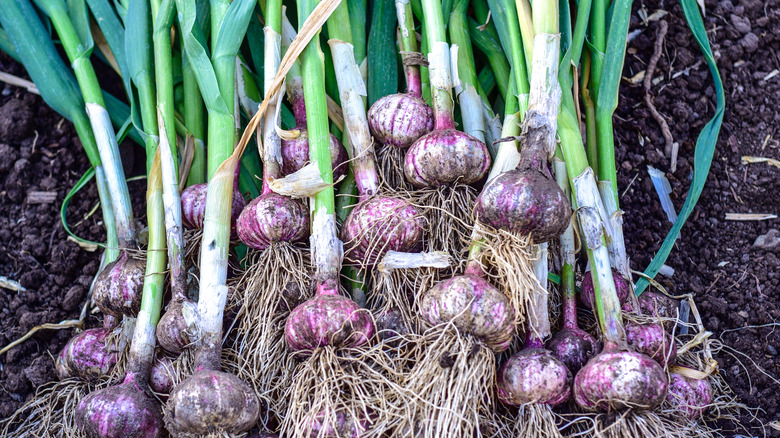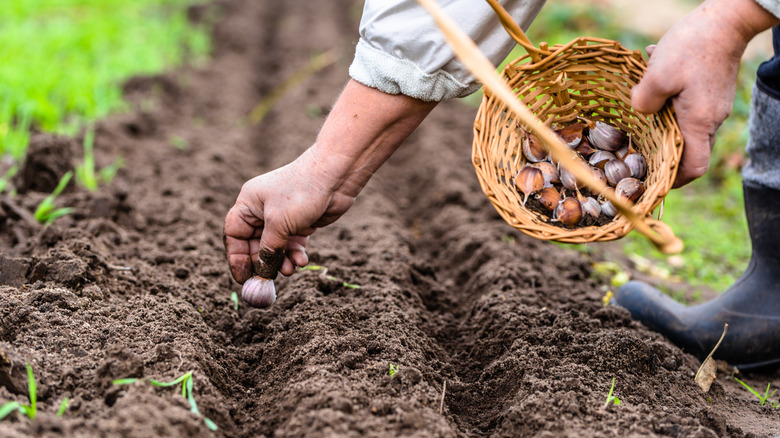Why Fall Is The Perfect Season To Start Planting Your Own Garlic
With fall right around the corner, much of your garden is in harvest, and some of it might be ready to be cut down in preparation for the winter. Clearing out your beds is a critical part of fall gardening practices. And some might call it a year once everything is finished producing in the fall. But you might want to consider planting garlic, which needs the winter temperatures to form its root base. The cold weather allows it to form each individual clove that creates the garlic bulb. The key is to plant it at just the right time, about two weeks before it freezes. If you plant it too early and the garlic grows a shoot out of the ground, it will likely freeze and die once winter is here. Planting it in the fall, just before the first frost, allows it to develop its root system and get established in the ground. The ideal time you should plant garlic is early to mid-October.
Depending on where you live, you'll need to choose a garlic variety that does well in your climate. Often, store-bought garlic is less than ideal for planting in your garden. Local nurseries and produce farmers will likely have types of garlic that are ripe for growing in your area. The thing with grocery store garlic is that it's mostly softneck varieties, which are great for growing large amounts and have a longer shelf life. But they don't handle harsh winters very well and often come from China or California, where it's warm. Hardneck garlic, on the other hand, thrives in the intense cold and is preferable for most North American winter climates.
How to plant, grow, and store garlic
Once you're ready to grow your own garlic and have a suitable variety to plant in the fall, it's time to prepare your garden. Garlic is great to plant after a cover crop like buckwheat, alfalfa, or clover. You can also plant it after other crops, too, including peas, squash, and green beans. Separate your garlic bulb and plant the biggest cloves to grow the biggest bulbs. You can use the smaller ones in cooking or dry them out to blend into garlic powder. Create holes 1 to 3 inches deep and spaced 6 inches apart. Then, plant the garlic pointy side up. Water your garlic right away to promote root growth before the frost comes, and continue watering for the next few weeks. After the first frost, you'll want to add about 4 inches of mulch to your garlic beds to minimize weeds and insulate them.
Around June through September of the following year, it's time to harvest and cure your garlic. Gently dig them out of the ground and remove any excess dirt. Tie them up and hang them in a cool, dry area in the shade for about three weeks until the roots feel dry. You don't want to wash your garlic bulbs during any point after harvesting if you want them to have a long shelf life. Continue to keep them in a cool, dark, dry place so that they will last for several months.
You can plant garlic in the springtime, but it won't grow as big as garlic planted in the fall. The bulbs still need cold weather and frost for them to form. Planting garlic in the fall also gives it a head start on root development, keeping your garden productive all year round.

